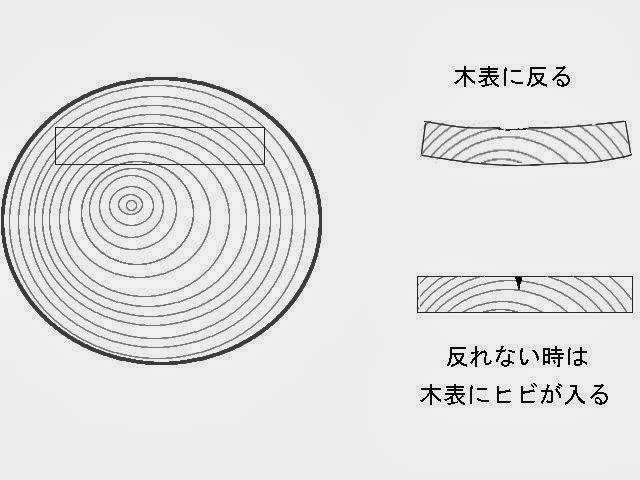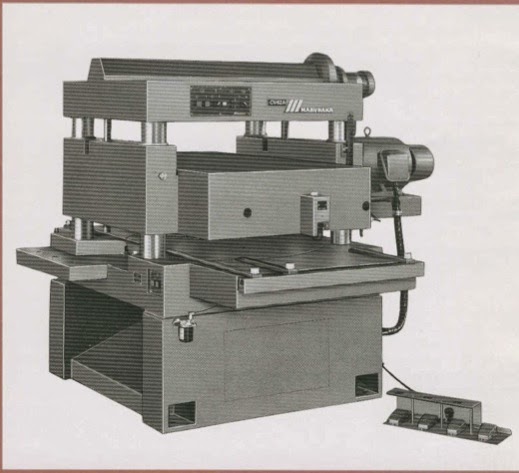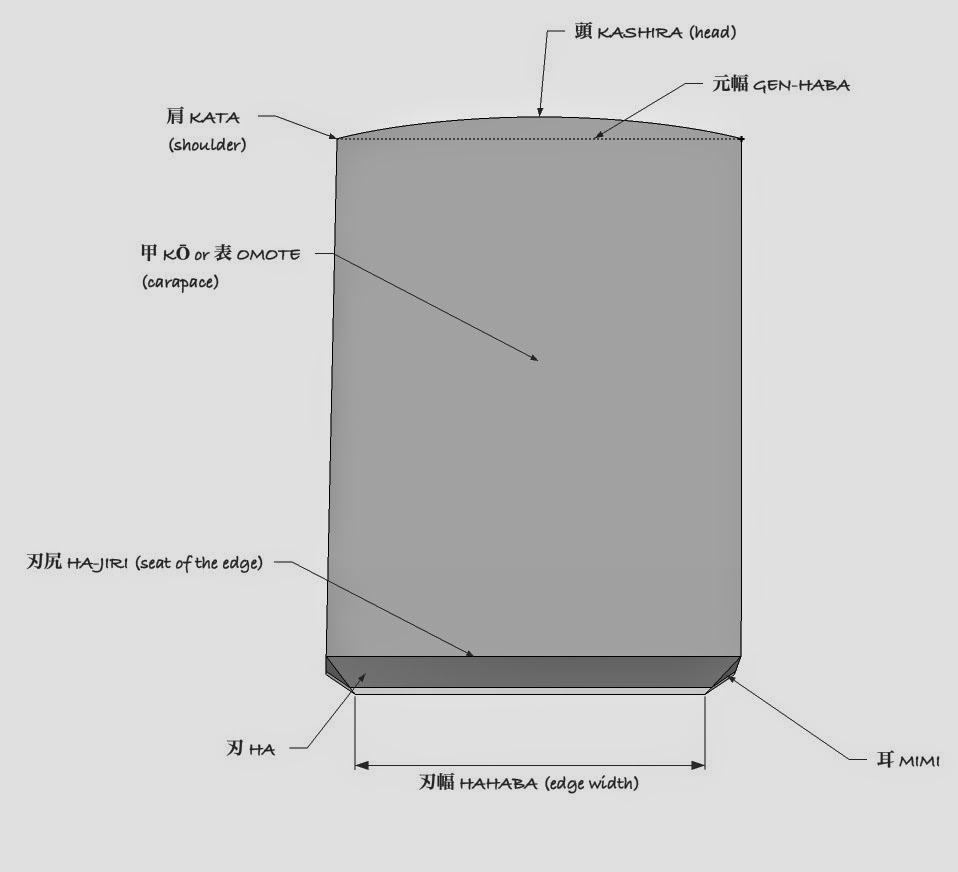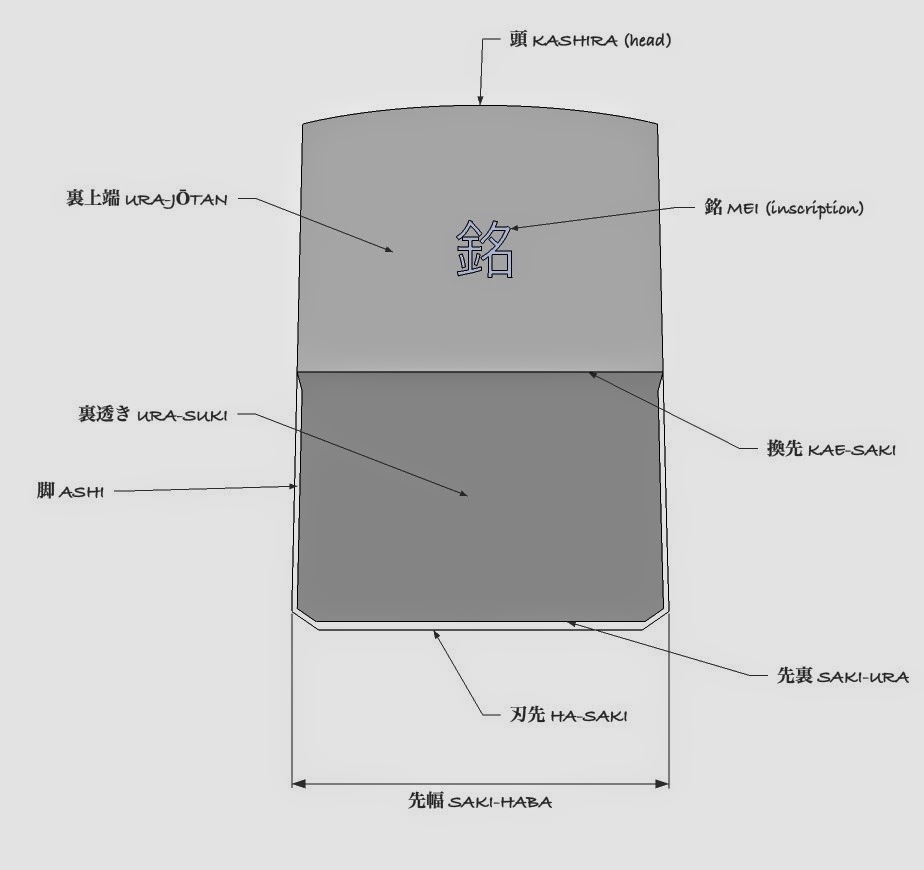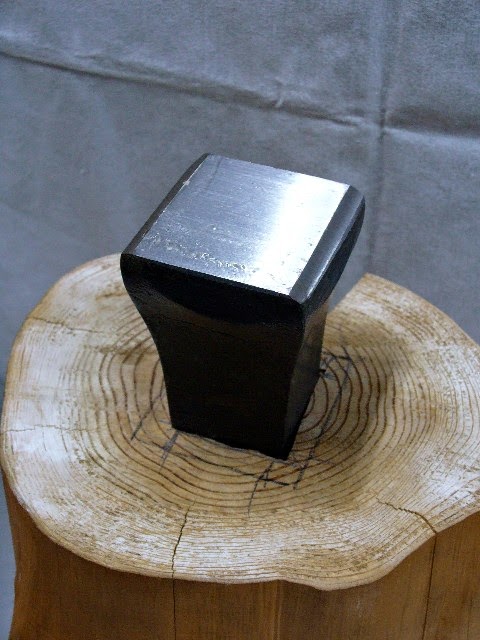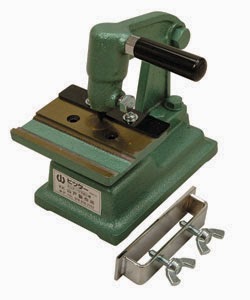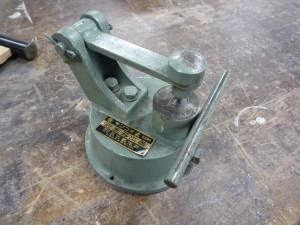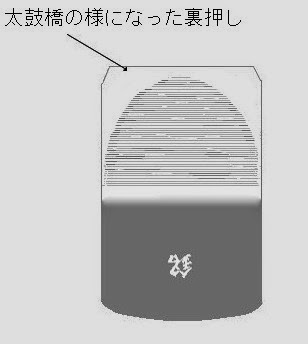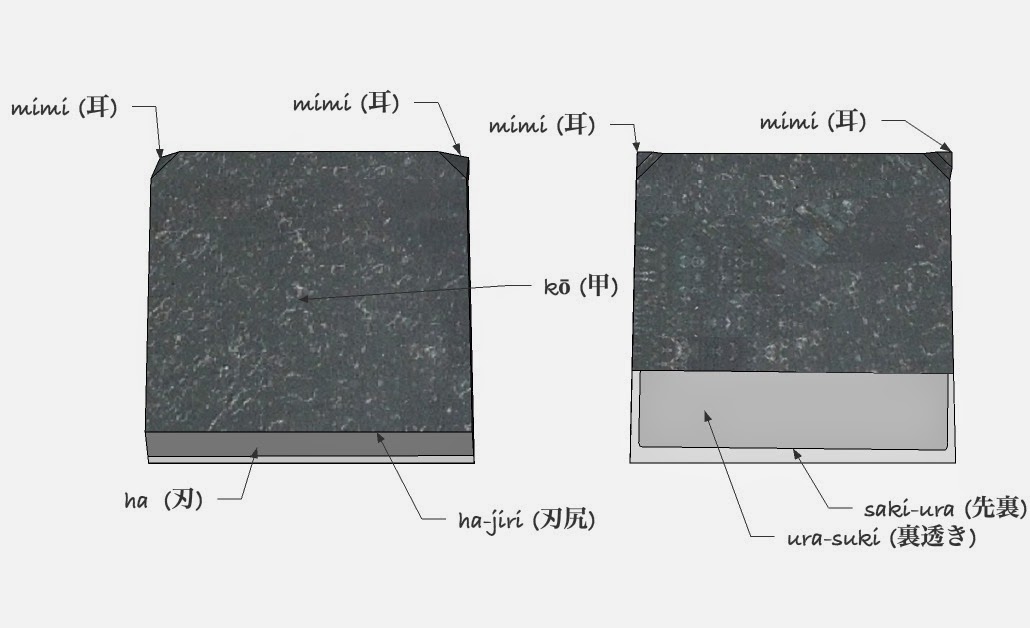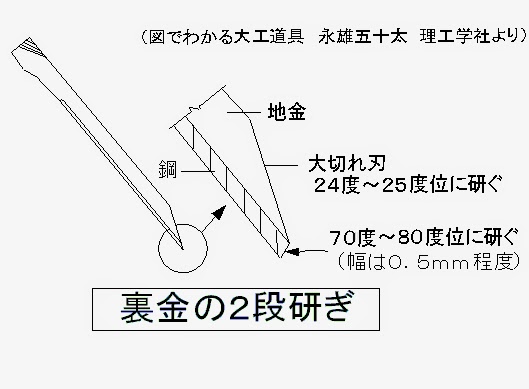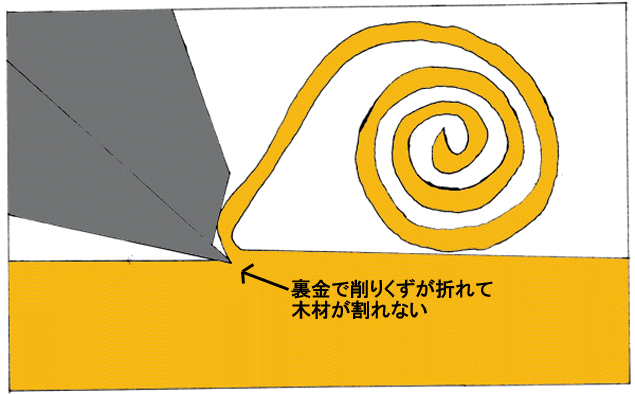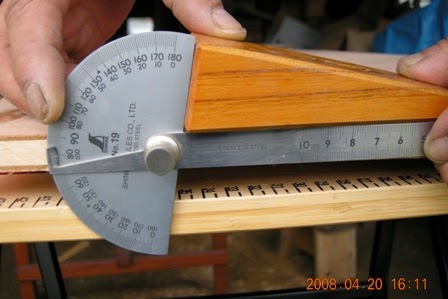This is a series of posts describing the design and build of a coffee table and possibly more. Click here for Post 1, with subsequent posts links to be found at the bottom of each entry.
In the previous post, I mentioned that the hunt for suitable material with which to construct the coffee table had widened from the initial consideration of Claro Walnut to include other woods, notably bubinga. I had found a large piece of 12/4 bubinga, 16' long and 50" wide, and suggested to the client that it would likely be the best choice for this project, especially given the possibility that I would be designing and building a sideboard as well, which could be constructed out of the same slab of wood.
The ball was in the client's court, and he checked in with me to ascertain whether I felt I had exhausted the options I had been looking at, to which I replied I had. Of course, given an extended period of time to continue hunting, who knows what sort of material might come to light, however I also tend to think that when you come across the right thing - -well, it's a bird in the hand instead of two in the bush sort of situation. I think the likely future supply of thick and wide bubinga slabs looks uncertain at best, so, carpe lignum. (I'm just making that Latin up, and hopefully nobody will be too cross about it)
The client got back to me the next day, and, having thought it over, decided he would buy the bubinga slab! The first thing that came to me was a feeling of delight and excitement. The second thing to come to me was a feeling of mild apprehension, as I was wondering exactly how I would get this behemoth of a board into my shop. Besides the fact that there is no forklift at my shop space, the board is too wide to go through the freight door, unless it is on edge, and I was frankly on edge myself thinking about trying to maneuver something like that on its edge. I probably won't be doing it that way. It will have to come through the double front doors, just like the deliveries of machinery I've have over the past year. I think I've figured the logistics out and should be able to manage once the board gets here. It will involve a tow truck, and hopefully no one will get flattened or throw their back out.
I also have some anticipatory apprehension in regards to the thought of cutting into this mega slab of wood. I always think of a line in Krenov's The Fine art of Cabinetmaking, where there's a picture of a slab of wood and a handsaw a good way into a cross cut - the caption reads:
How true that is. Careful thought, if not mild terror. He also noted,
----------
I've been fine-tuning the design, and thought I would share some pictures of how things currently stand.
First, a perspective view:
A plan view of the table top:
I've changed the length of the mitered abutments between bread board ends and table top to better accommodate the connection between the top of the table frame.
Elevation view:
After trying various forms for the pillow blocks, I decided to make them overtly architectural, proportioning them using one Japanese method, the 'division by 5.5 pattern' (one of several used in Japanese architecture), and then elongating the blocks. Normally they would be square of course.
A bit of what is going on joinery-wise at one of the corners:
In the view shown above, there are some details yet to be added.
One difference between the current piece and the earlier version shown a couple of posts back is that the lead edge of the legs, along with the upper outer arris of the rails and the lower arris of the table top all have concave bead molding, whereas previously they were flat chamfered. Flat chamfers remain on the table's upper arris, on the side arrises of the legs and on the stretchers.
After extensive study, I've also come up with a slightly different way (at least, in light of what I have seen before) of doing the 3-way mitered connections between leg and rails, and will talk more about that in a later post. If you're interested in the topic of Chinese 3-way miter joints, I did talk a bit about that in a post from a few years back. Click here to read more.
In recent emails with the client he ran by me the idea of adding a drawer or drawers, to the table, and asked me what I thought of that. While I could see different ways in which it could be done, after mulling it over for a while I concluded that it would detract from the design. I suggested that if he was interested in having a drawer to store something, then maybe we could look at making a smaller side table, in the same pattern as the coffee table except for the addition of a single drawer. The client said he liked that idea so it is looking like I may be building a small side table as well. It would be nice to have the pair of stylistically matched tables, kind of a cute 'parent' and 'child' team up. That's not finalized at this point, it is simply under discussion.
All for now. Thanks for your visit to the Carpentry Way, and comments always welcome.
In the previous post, I mentioned that the hunt for suitable material with which to construct the coffee table had widened from the initial consideration of Claro Walnut to include other woods, notably bubinga. I had found a large piece of 12/4 bubinga, 16' long and 50" wide, and suggested to the client that it would likely be the best choice for this project, especially given the possibility that I would be designing and building a sideboard as well, which could be constructed out of the same slab of wood.
The ball was in the client's court, and he checked in with me to ascertain whether I felt I had exhausted the options I had been looking at, to which I replied I had. Of course, given an extended period of time to continue hunting, who knows what sort of material might come to light, however I also tend to think that when you come across the right thing - -well, it's a bird in the hand instead of two in the bush sort of situation. I think the likely future supply of thick and wide bubinga slabs looks uncertain at best, so, carpe lignum. (I'm just making that Latin up, and hopefully nobody will be too cross about it)
The client got back to me the next day, and, having thought it over, decided he would buy the bubinga slab! The first thing that came to me was a feeling of delight and excitement. The second thing to come to me was a feeling of mild apprehension, as I was wondering exactly how I would get this behemoth of a board into my shop. Besides the fact that there is no forklift at my shop space, the board is too wide to go through the freight door, unless it is on edge, and I was frankly on edge myself thinking about trying to maneuver something like that on its edge. I probably won't be doing it that way. It will have to come through the double front doors, just like the deliveries of machinery I've have over the past year. I think I've figured the logistics out and should be able to manage once the board gets here. It will involve a tow truck, and hopefully no one will get flattened or throw their back out.
I also have some anticipatory apprehension in regards to the thought of cutting into this mega slab of wood. I always think of a line in Krenov's The Fine art of Cabinetmaking, where there's a picture of a slab of wood and a handsaw a good way into a cross cut - the caption reads:
Cross-cutting should always be preceded by careful thought
How true that is. Careful thought, if not mild terror. He also noted,
Even with years of experience, one must concentrate when sawing the wood to size, since between hope and result there lies a line called attention.
----------
I've been fine-tuning the design, and thought I would share some pictures of how things currently stand.
First, a perspective view:
A plan view of the table top:
I've changed the length of the mitered abutments between bread board ends and table top to better accommodate the connection between the top of the table frame.
Elevation view:
After trying various forms for the pillow blocks, I decided to make them overtly architectural, proportioning them using one Japanese method, the 'division by 5.5 pattern' (one of several used in Japanese architecture), and then elongating the blocks. Normally they would be square of course.
A bit of what is going on joinery-wise at one of the corners:
In the view shown above, there are some details yet to be added.
One difference between the current piece and the earlier version shown a couple of posts back is that the lead edge of the legs, along with the upper outer arris of the rails and the lower arris of the table top all have concave bead molding, whereas previously they were flat chamfered. Flat chamfers remain on the table's upper arris, on the side arrises of the legs and on the stretchers.
After extensive study, I've also come up with a slightly different way (at least, in light of what I have seen before) of doing the 3-way mitered connections between leg and rails, and will talk more about that in a later post. If you're interested in the topic of Chinese 3-way miter joints, I did talk a bit about that in a post from a few years back. Click here to read more.
In recent emails with the client he ran by me the idea of adding a drawer or drawers, to the table, and asked me what I thought of that. While I could see different ways in which it could be done, after mulling it over for a while I concluded that it would detract from the design. I suggested that if he was interested in having a drawer to store something, then maybe we could look at making a smaller side table, in the same pattern as the coffee table except for the addition of a single drawer. The client said he liked that idea so it is looking like I may be building a small side table as well. It would be nice to have the pair of stylistically matched tables, kind of a cute 'parent' and 'child' team up. That's not finalized at this point, it is simply under discussion.
All for now. Thanks for your visit to the Carpentry Way, and comments always welcome.
+a.jpg)
+b.jpg)
+c.jpg)
+d.jpg)

